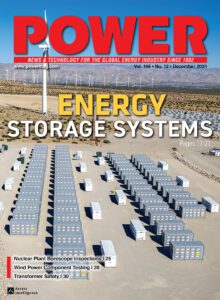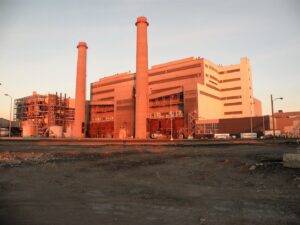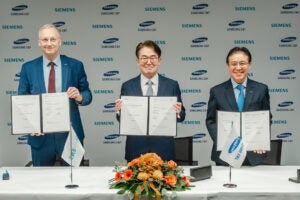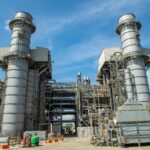In three front-page rulings this summer, the U.S. Supreme Court made sweeping changes to the ways that federal judges will review future agency actions—including a rejection of its longstanding Chevron doctrine for judicial deference to agency interpretations of ambiguous statutes.
Overlooked amid the turmoil, the court also handed down a decision that suspended regulations from the U.S. Environmental Protection Agency (EPA) to control ground-level ozone (better known as smog) that travels from upwind states to impair the air quality of downwind states. After the D.C. Circuit appeals court denied a request by several states for an emergency stay, the Supreme Court stepped in and enjoined EPA from enforcing its rule. The court found that the agency had failed to fully consider the effects of removing some upwind states when it implemented the plan against other states. The justices stayed the rule while the D.C. Circuit further considered it, and critically, it put the EPA’s rule on hold until the D.C. Circuit reached a final ruling and during any petitions for the Supreme Court to review that decision.
COMMENTARY
This decision may seem like an unremarkable fellow traveler with the court’s other three major rulings on administrative agencies. But Ohio v. EPA is different because it highlights a growing shift in the court’s use of its emergency docket to resolve environmental battles on an expedited basis—namely, the growing prominence of the court’s “shadow docket” in environmental cases.
Major environmental regulations often invoke novel and complicated legal questions, and resolving them can require years of hard-fought litigation. As a result, the real battle in many complex regulatory lawsuits often turns on what rules apply during the long-term fight. This dynamic has become a hallmark of modern litigation over federal environmental laws and regulations. For example, when the EPA implemented a regulation in 2012—after 12 years of study and litigation—that required utilities to install emission controls for mercury, the Supreme Court in Michigan v. EPA ultimately struck down that rule after three years of litigation. By that time, up to 70% of the industry had already installed the controls required by the rejected rules because of the demands of long-term capital budgeting and construction needs. When the EPA announced that litigation loss as a victory, the court took note.

After Michigan v. EPA, the court has increasingly heard requests to suspend implementation of major environmental rules while litigation over their validity proceeded, sometimes for years. After the court’s stay of the Obama administration’s Clean Power Plan in 2016, litigants have begun to crowd the court’s emergency docket with requests to halt major Clean Air Act rules during their lawsuits (including, of course, power sector cases).
When the court this summer stayed the “Good Neighbor Rule” in Ohio v. EPA, it struck a new template for power sector environmental litigation. For example, because the court took the case after the D.C. Circuit had already refused an injunction and had scheduled oral arguments at a blisteringly fast pace, the court essentially deprived itself of a fuller development of the facts or legal analysis by the lower court.
In a wincing moment for the court, the majority’s opinion mistakenly referred to “nitrous oxide” (rather than nitrogen oxides) as one of the gases that the EPA sought to regulate. Nitrous oxide, of course, is “laughing gas,” commonly used as a dental anesthetic—a slip-up that the court might have caught in a normal review period. As professor Steven Vladeck has noted, the court also may have used the wrong legal standard for issuance of equitable relief during appeal.
These dysfunctional patterns seem set to repeat with the newest round of power sector litigation in the court’s emergency docket. In West Virginia v. EPA, 27 states and other litigants have filed six different emergency petitions to review the Biden administration’s new rule to control carbon emissions from coal- and gas-fired power plants. These petitions don’t raise a foundational challenge to the EPA’s legal ability to regulate power plant emissions (the key question in the earlier West Virginia v. EPA case over the Obama administration’s Clean Power Plan). They instead focus on whether the EPA has adequately shown that its chosen technology is feasible to set a new source performance standard for coal-fired and natural gas-fired power plants. This type of fact-intensive judgment has long laid within the EPA’s discretion under the Clean Air Act, and the agency had already undertaken an enormous effort to build an extensive administrative record to support the rule. The court has yet to rule on the emergency petitions, but other requests surely await.
The new West Virginia v. EPA fight over the Biden carbon rules for the power sector brings all of these infirmities together in a troubling scrum. A challenger to a major EPA rule has nothing to lose, and everything to gain, under this emergency docket framework by filing a stay request directly from the court and side-stepping lower courts. The court will likely find itself wrestling with a growing tide of requests for emergency relief on multiple environmental fronts from litigants hoping to shunt aside enforcement of rules during a long judicial appeals process.
—Tracy Hester is instructional associate professor of law, and teaches environmental law at the University of Houston Law Center.










